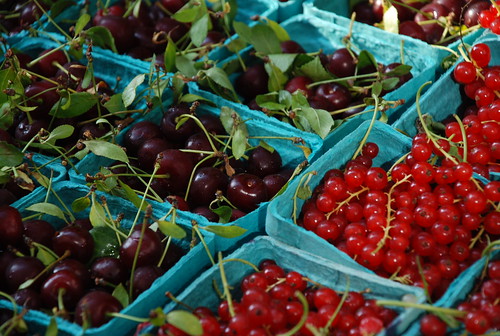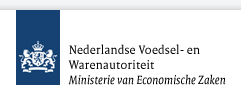 Een bijdrage van Karin Verzijden, Axon
Een bijdrage van Karin Verzijden, Axon
How to advertise healthy berries without cherry picking?
How do you communicate the main characteristics of your product to the public [red. zie ook: LS&R 704]? First of all by its name of course – fair enough. At second glance, the list of ingredients comes into play. Pretty simple, isn’it? Beware however that Regulation 1169/2011 on the provision of food information to consumers (“the Regulation”) provides detailed rules for these two items – and more. And that you need to act in compliance by 13 December 2014, both regarding your product labels and regarding the information provided on your company’s website. If you are of the opinion that you can use a little help from this perspective, this post may be useful to you.
Name of the food
If there is a name prescribed by law for a food product, this must be used, e.g. “herring”. In the absence of such legal name, the customary or a descriptive name shall be used. This is a description of the food, and if necessary of its use, which is sufficiently clear to enable consumers to know its true nature and distinguish it from other products with which it might be confused, e.g. “cookie with Brazil nuts”.
Name in Member State of production equals name in Member State of marketing
In general, the name of the food in the Member State of production will be the same as the name in the Member State where the food is marketed, unless such does not enable the consumer to know the true nature of the food. For example, the name “vegetable samosa” may need to be qualified by “a pastry parcel with spicy vegetable filling”.
Other particulars to be communicated
Furthermore, the name of the food shall include or be accompanied by the particulars as to the physical condition of the food or the specific treatment which it has undergone in all cases where omission of such information could mislead the consumer, e.g. “freeze-dried” or “quick-frozen”. Also, in the case of foods in which a component or ingredient that consumers expect to be normally used or naturally present has been substituted, the labeling shall bear a clear indication of the component/ingredient that has been used for the partial of whole substitution. This should be done in close proximity to the name of the product and in a font size that is not much smaller than the name of the product. Finally, meat and fishery products giving the impression to be made of a whole piece of meat or fish, but actually consist of different pieces combined with other ingredients, shall bear the indication “formed meat/fish”. Bon appetit!
List of ingredients and legibility requirements
The list of ingredient shall include all ingredients of the food, named by their specific name, in descending order of weight, as recorded at the time of their use in the manufacture of the food. Only ingredients constituting less than 2 % of the finished product may be listed in a different order after the other ingredients. Futhermore, ingredients which belong to certain categories, e.g. “mixtures of flour obtained from two or more cereal species”, may be designated by the name of that category rather than by the specific name. As far as information present on the product label is concerned, this shall be printed on the package or on the label in such a way as to ensure clear legibility. Therefore, the x-height of het characters used shall in principle be equal to or greater than 1,2 mm.
Both product label and website information should be complete
Even if your product labels comply with all of the above, you may still be subject to a complaint regarding misleading information if your website information is not complete. In a recent decision of the Dutch Advertising Code Committee, a complaint regarding the product “Healthy People’s blueberry and raspberry juice” was discussed. According to this complaint, both the packaging and the company website provided misleading information regarding this product. The claim regarding the packaging was aimed at the fact that it only displayed blueberries and raspberries, whereas in reality, the juice consisted of 10 % blueberry and 4 % raspberry. From the list of ingredients, it appeared that other ingredients were apple, white raisin and aronia. The claim regarding the website was directed against the fact that blueberry and raspberry were the only ingredients mentioned.
Characteristic taste of the product
As a defence, Healthy People argued regarding both the packaging and its website that it was a deliberate choice to insist on the characteristic taste of the product rather than on side-issues. Besides, the consumer was considered smart enough to understand that a juice consisting of only blueberries and raspberries would be too sour and too expensive (the average price of a liter blueberries being EUR 15). Healthy People so far had not received any consumer complaints and it therefore had not realised there was some issue here.
Average consumer
The Advertising Code Committee considered that the packaging was in line with applicable legislation. Allegedly, the average consumer would understand that the product does not only consist of blueberries and raspberries. Instead, such consumer understands that these ingredients are, amongst others, part of the product. Such could be deduced from the list of ingredients that the average consumer can be expected to consult regarding a high end fruit drink. Now that the website did not contain such list of ingredients, this was considered unclear. In the absence of full information a consumer could decide to buy this product, whereas he would not have done so otherwise. The limited information provided on the website was therefore considered misleading.
Conclusions
As follows from the decision discussed above, it is not sufficient that the labeling is in compliance with the applicable food information legislation, the same applies to the information provided at your company’s website. As of December 2014, many detailed food information rules will apply under the Regulation. However, despite the aim for harmonization at an EU level, there is still room for interpretation. This for instance applies to name of the product in connection with the wording “where omission of such information could mislead the consumer”. It does not come as a surprise that the interpretation of such wording may vary from country to country. Obtaining local advice for the launch of a new product therefore continues to be a sound plan. Also, do not overlook the annexes attached to the Regulation. They are 15 and full of strict requirements, for instance the one to state “formed meat” on your product. Although not so sexy, when applicable, you will not be able to get around it!
Karin Verzijden
 Een redactionele bijdrage van Annemieke Kooy, Axon Advocaten.
Een redactionele bijdrage van Annemieke Kooy, Axon Advocaten. Bijdragen ingezonden door Karin Verzijden,
Bijdragen ingezonden door Karin Verzijden, 

 Ingezonden door Wouter Pors,
Ingezonden door Wouter Pors, 
 Een bijdrage van Peter van Gemert en Wouter Pors,
Een bijdrage van Peter van Gemert en Wouter Pors, 

 Conclusies Gezondheidsraad - De Gezondheidsraad komt, op basis van de epidemiologische gegevens die in zijn advies zijn beschreven en daarbij de kwaliteit en de sterke en zwakke punten van de verschillende onderzoeken in aanmerking nemend, tot de volgende eindconclusie: “Er is geen duidelijk en consistent bewijs voor een verhoogd risico voor tumoren in de hersenen of andere delen van het hoofd gerelateerd aan gebruik van een mobiele telefoon gedurende 13 jaar of minder; een dergelijk risico kan echter ook niet worden uitgesloten. Over langduriger gebruik kan niets worden gezegd.”
Conclusies Gezondheidsraad - De Gezondheidsraad komt, op basis van de epidemiologische gegevens die in zijn advies zijn beschreven en daarbij de kwaliteit en de sterke en zwakke punten van de verschillende onderzoeken in aanmerking nemend, tot de volgende eindconclusie: “Er is geen duidelijk en consistent bewijs voor een verhoogd risico voor tumoren in de hersenen of andere delen van het hoofd gerelateerd aan gebruik van een mobiele telefoon gedurende 13 jaar of minder; een dergelijk risico kan echter ook niet worden uitgesloten. Over langduriger gebruik kan niets worden gezegd.” Uit het persbericht: De Nederlandse Voedsel- en Warenautoriteit (NVWA) waarschuwt consumenten voor afslankpillen met de naam Dexaprine en adviseert hen direct met het middel te stoppen. Dexaprine is een product dat wordt gebruikt door sporters en mensen die willen afvallen. Het wordt in Nederland via webshops verkocht.
Uit het persbericht: De Nederlandse Voedsel- en Warenautoriteit (NVWA) waarschuwt consumenten voor afslankpillen met de naam Dexaprine en adviseert hen direct met het middel te stoppen. Dexaprine is een product dat wordt gebruikt door sporters en mensen die willen afvallen. Het wordt in Nederland via webshops verkocht.














